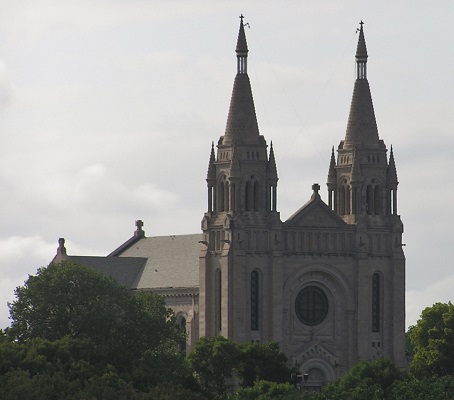In my travels I have seen a lot of churches. I realized that I’m ambivalent to church buildings. Now I’m not ambivalent to what churches DO, but I’m ambivalent to the building.
I’ve heard people say that they LOVE their church building. Now I get loving what the church does – care for us in times of grief and sorrow, lift us up in times of joy, provide a safe place for youth and groups to meet, being a place of worship and thankfulness for God, and of course having a place for meetings. But the building didn’t care for us, lift us up – it’s simply a vehicle for things to happen.
For those that love their building, I need you to know your building is not that unique. With a few exceptions your building is the same style as many, many others. Of course there’s a few accoutrements that differ, but your building looks a lot like other buildings. I hope you love the building because of what the people in the building have done or because it’s a place where you find contentment.
I also wonder why there’s so many church buildings. Surely theology and tradition will separate us, but how many church buildings represent pettiness, control, and in-fighting? How many buildings represent inflated egos of pastors or church members? How many buildings
represent visions of simply serving those on the inside?
A couple years ago I was in the St. Paul Cathedral and they were doing a multi-million dollar renovation to this amazing structure. The whole time I couldn’t break away from wondering what their budget was for feeding the poor, caring for God’s own outside the walls of this building.
I wonder what God thinks of our church buildings? I’m nowhere close to a biblical scholar, but know references to temples (and the rules therein) aren’t generally flattering in the Bible. I know Jesus spent a lot of time with people out and about. I’m guessing God is more about what the church does than what the building is.
So I’m ambivalent to church buildings. But I’m not ambivalent to bell choirs. Not a fan.

3 thoughts on “Ambivalent”
Interesting thoughts. I’ve only read one other post by you, so I don’t really know your context [UPDATE: Took 2 minutes to read your short bio.]
My travels and moving have brought me into some historic church buildings (Our Lady of Guadalupe in Mexico, Church of the Holy Sepulcher in Jerusalem, St. Pete’s in the Vatican) and some humble buildings (the damaged Methodist church in Mississippi that doubled as a hostel for Hurricane Katrina relief volunteers, the YMCA multipurpose room where High Rock Church in Lexington, NC had its humble beginnings). I think that there is something especially sacred about each of these buildings. In our fragmented world where so many people are marginalized and isolated, churches are a rare place where “everybody knows your name”. Of course, it is about the people who are in the buildings and the good things that come out of people meeting in these buildings which matter most. Pot lucks, with their goulash & jello pies feed the hungry. A rural church may decide to pass out water to the dozens of bicyclists who will be zooming by in their tour-de-podunkville, thus, giving drink to the thirsty. Some churches have food pantries, or clothes closets and some even give over space for homeless folks to sleep when the regular shelters are overflowing in the coldest months, feeding, clothing and sheltering those who need it most.. Every morning at my church, I see folks blessed who will go out that morning to visit the sick and bring them communion. A lot of AA groups find a hospitable, free space with working coffee pots where they can have their meetings and, hopefully, find release from the slavery of addiction. At a Presbyterian Church in West Virginia, my then-fiance was not as creeped out by the rest of us that he was sleeping in the room where they rolled in the coffins for viewings. The church was a place to begin the burying of the dead.
I once lived in a first floor apartment from where I could see four church steeples from my front stoop. Among them, they probably had 50 Sunday school rooms where the ignorant were instructed in the basics of the faith. From the pulpit, I hope doubters and sinners were counseled, admonished and encouraged. Among the participants in those meetings you mention, the best practice of Christianity comes forth when annoyed people forgive their annoyers, when policies are agreed upon which comfort the afflicted and where people come together to write up a prayer list of the sick and the dead. I know your point is to caution people against idolizing their church building (I’d add: church community, church logo, church pastor) but I think it is important to acknowledge the utilitarian nature of a place to meet, to cry, to laugh, to do all that stuff mentioned in the hard-to-spell Ecclesiastes (3).
Thanks for your thoughtful response. You last line WAS my point, that I’ve seen too many obsessed with the building and not obsessed in how God could work through the people that hang out in the building. Blessed Easter, B
Point taken. God bless you and keep up the great blog!